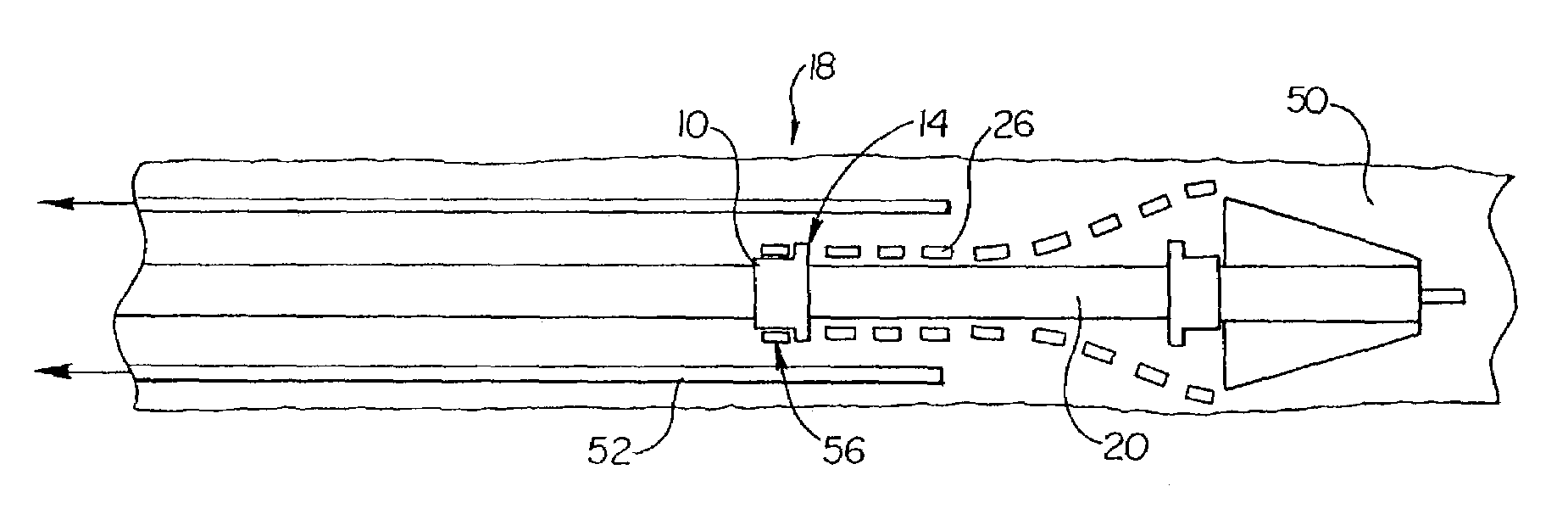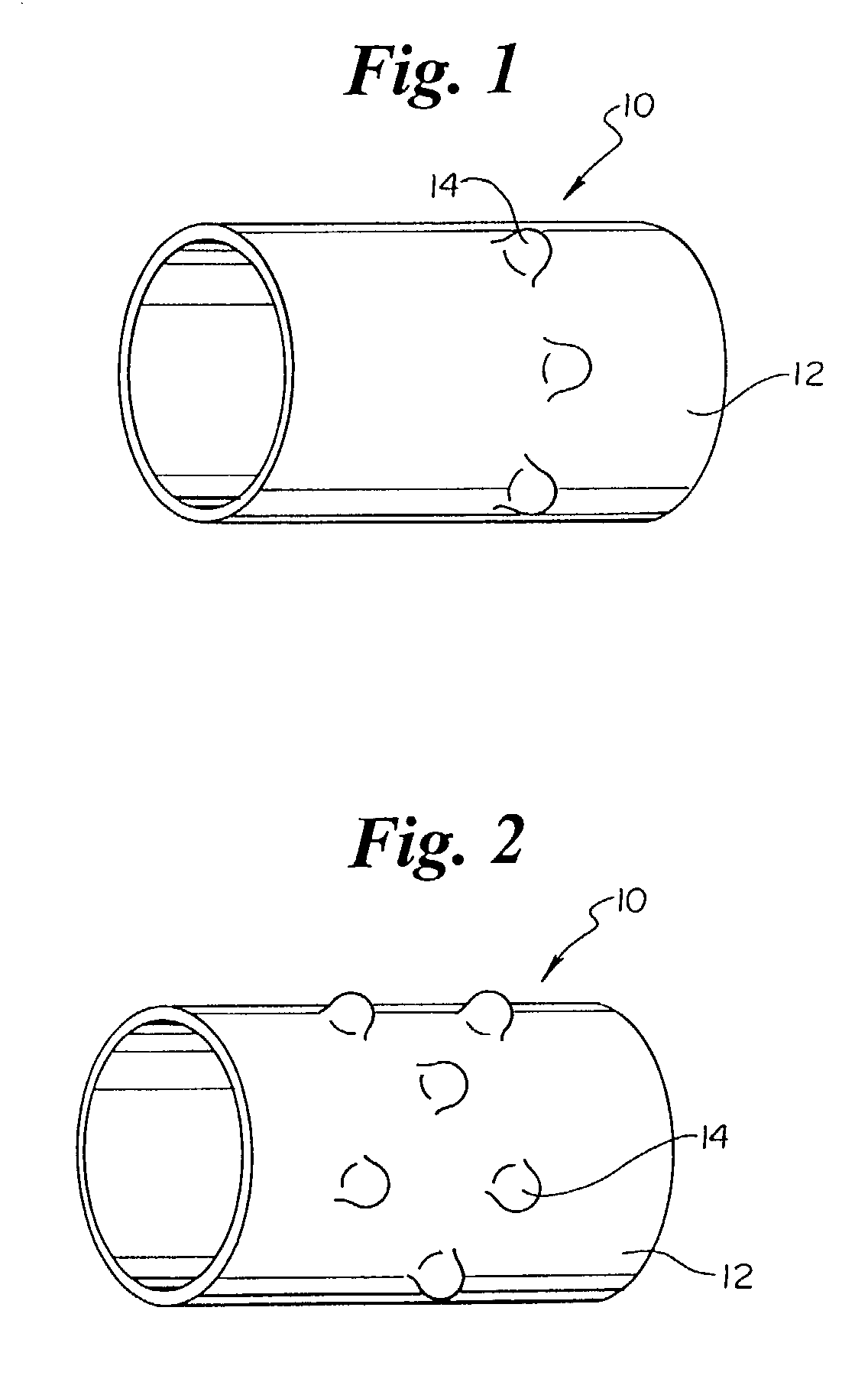Stent delivery system with securement and deployment accuracy
- Summary
- Abstract
- Description
- Claims
- Application Information
AI Technical Summary
Benefits of technology
Problems solved by technology
Method used
Image
Examples
Embodiment Construction
[0029]While this invention may be embodied in many different forms, there are described in detail herein specific preferred embodiments of the invention. This description is an exemplification of the principles of the invention and is not intended to limit the invention to the particular embodiments illustrated.
[0030]For the purposes of this disclosure, like reference numerals in the figures shall refer to like features unless otherwise indicated.
[0031]As mentioned above the present invention is embodied in a variety of forms. For example, in the embodiment shown in FIG. 1 the invention is embodied in a stent retaining band or collar, indicated generally at 10, which has an outer surface 12 comprising one or more protrusions 14. As illustrated by FIGS. 1 and 2 the protrusions 14 may have similar or differing dimensions and orientations relative to one another. In addition, the protrusions 14 may be arranged or positioned on the outer surface 12 by columns, rows, or any other pattern...
PUM
 Login to View More
Login to View More Abstract
Description
Claims
Application Information
 Login to View More
Login to View More - R&D
- Intellectual Property
- Life Sciences
- Materials
- Tech Scout
- Unparalleled Data Quality
- Higher Quality Content
- 60% Fewer Hallucinations
Browse by: Latest US Patents, China's latest patents, Technical Efficacy Thesaurus, Application Domain, Technology Topic, Popular Technical Reports.
© 2025 PatSnap. All rights reserved.Legal|Privacy policy|Modern Slavery Act Transparency Statement|Sitemap|About US| Contact US: help@patsnap.com



